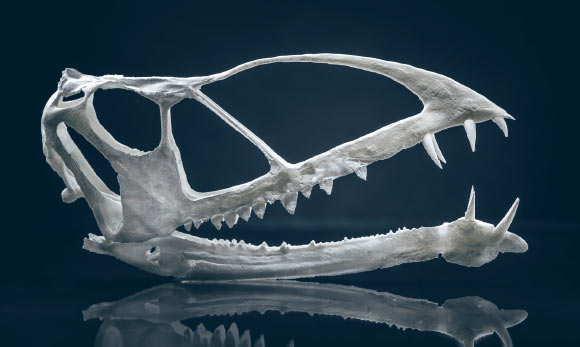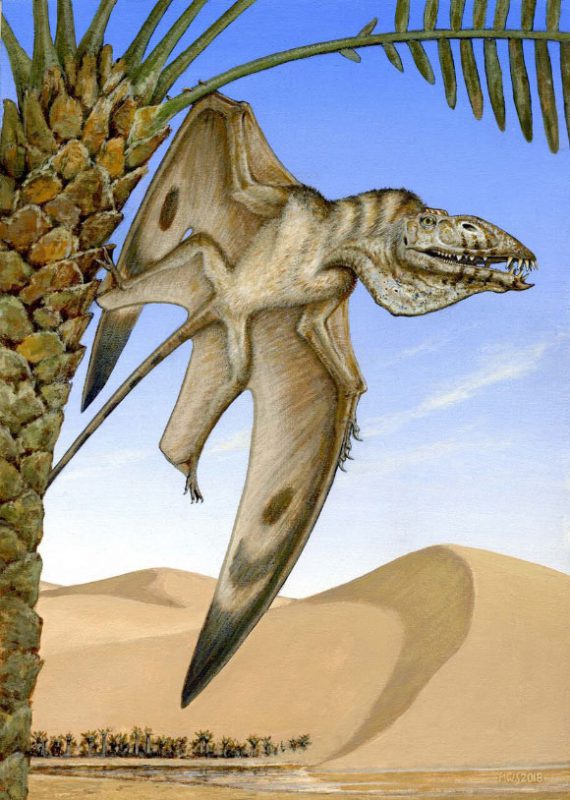Prehistoric animals are a subject that we just can't seem to get enough of. Dinosaurs—with their massive size and awe-inspiring characteristics—steal most of the spotlight. Nothing is going to change that. But ancient reptiles of the sea and air are just as fascinating. And compared to dinosaurs, they have a real head start.
For example, long before the first dinosaurs appeared in the late Triassic period, dolphin-like predators called ichthyosaurs were dominating the oceans. And while the earliest chicken-sized dinos—like Eoraptor and Coelophysis—were busy trying to avoid getting chomped on by the larger predators of the day, pterosaurs were already masters of the air.
Want proof? Behold, Caelestiventus hanseni (say suh-less-tee-VEN-tus han-sehn-eye). At around 210 million years old, it is one of oldest the pterosaur fossils ever found.
Caution: Fragile!

Modern technology, especially 3D printing, has made this discovery possible. (Nate Edwards/Brigham Young University)
However, while pterosaurs were widespread in prehistoric times, their fossils are extremely rare. That's because—just as with modern birds and bats—their bones were exceptionally light and fragile. You can't fly far with a heavy body! This fact is why most pterosaur skeletons were crushed over time into either a) nothingness, or b) something that looked like it was run over by a car.
Enter our new friend C. hanseni. Not only is this Utah fossil of an especially rare, and early species of pterosaur, its fossil was perfectly preserved. This desert species was buried under sand, and eventually encased in sandstone. This type of rock is far gentler to fossils, even fragile pterosaur bones. After CT scanning the bones within the rock, researchers were able to 3D print precise replicas for study.
What was it like?
Natural question. And thanks to this excellent fossil, we have answers!
C. hanseni had an incredible 112 teeth, including some dandy fangs at the end of its mouth. Though it was a fairly early example of a pterosaur, it was a pretty good size. Its wingspan was 1.5 metres (5 feet), which is the size of a large hawk.
The 3D print of its skull was so detailed, it actually showed the animal's brain cavity. This lets scientists analyze brain size and shape—they can tell that C. hanseni had excellent eyesight. All the better to spy prey from the sky!
See what other facts about this animal that you can spy in the video below.
 An artist's interpretation of this new fossil. (Michael Skrepnick/Brigham Young University)
An artist's interpretation of this new fossil. (Michael Skrepnick/Brigham Young University)









